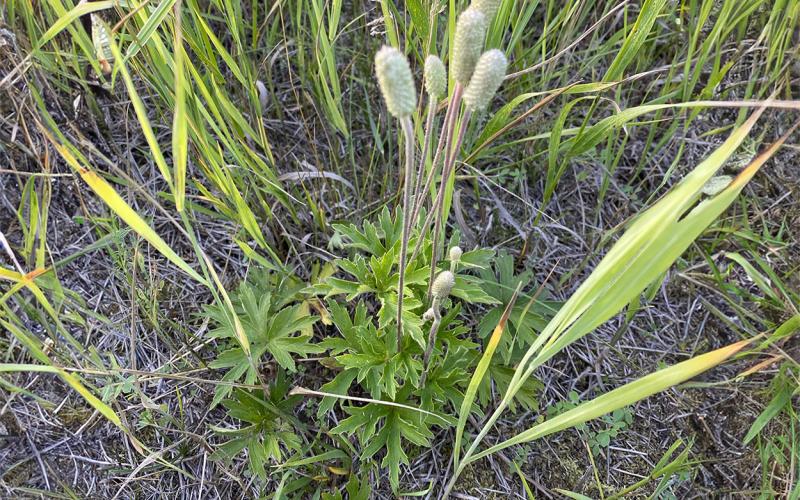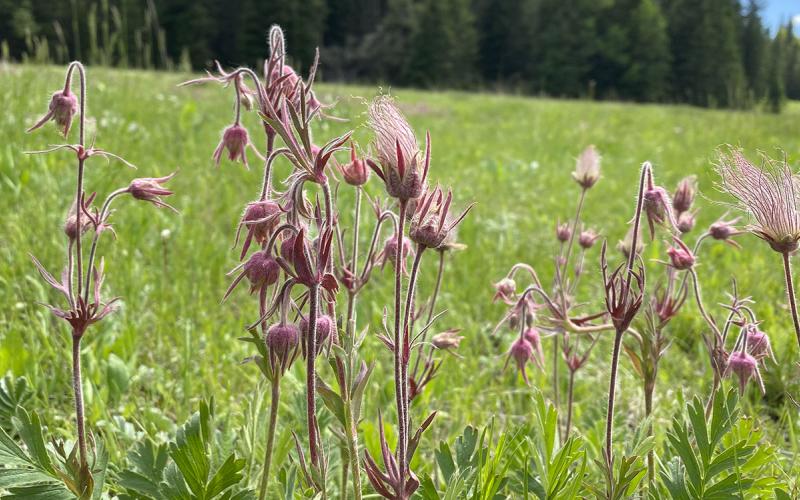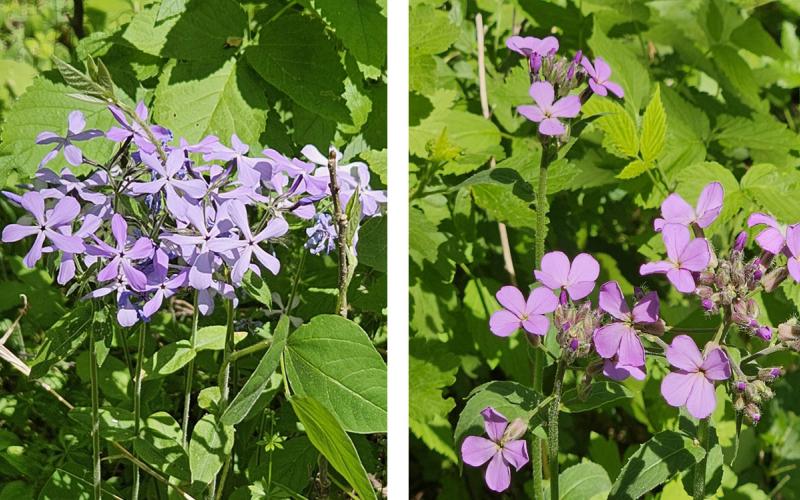
Written by Bret Lang, Graduate Research Assistant, under the direction and review of Lora Perkins, Associate Professor, in the Native Plant Initiative and the SDSU Department of Natural Resource Management; Robin Buterbaugh, and Kristine Lang.
Plant Profiles
Reaching heights of up to two meters and adorned with bright pinkish-purple flowers, fireweed (Chamaenerion angustifolium) is a striking native plant in South Dakota. However, another plant in this region often mistaken for fireweed does not belong here: purple loosestrife (Lythrum salicaria). This invasive species was introduced to the United States in the mid-1800s from Eurasia via the Great Lakes, with its seeds inadvertently transported in shipping ballasts. The two species are often confused with one another due to sharing a similar height, lanceolate-shaped leaves, and vibrant pink to purple floral spikes. However, they have contrasting impacts on their environment, and recognizing the differences between these two species is crucial for making informed management decisions that support optimal ecological function. Below are some of the key differences to look for when trying to identify these two species.
Flower Structure
A reliable way to distinguish between these two species is to look closely at their flowers. Both fireweed and purple loosestrife have pinkish-purple floral spikes; however, fireweed flowers have four egg-shaped petals (Figure 1), whereas purple loosestrife flowers have five to seven long and narrow petals (Figure 2).
Fireweed
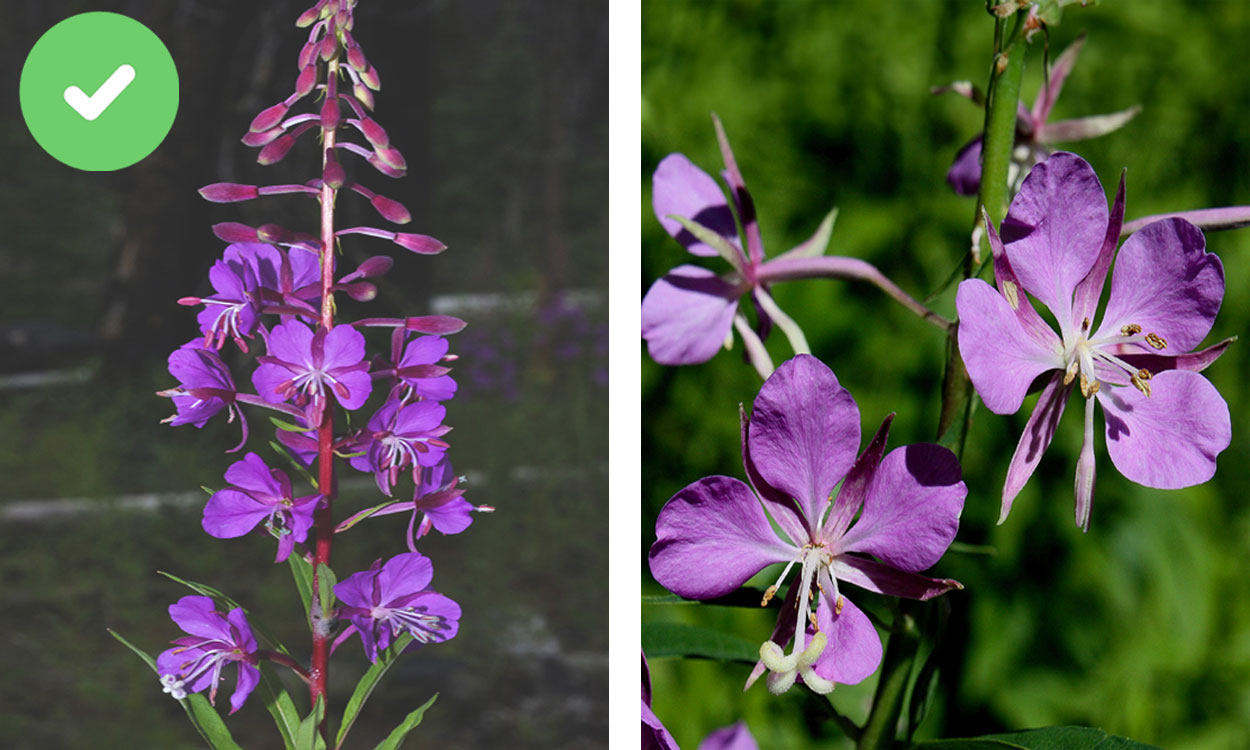
Purple Loosestrife

Leaves and Stems
Another distinguishing feature is the arrangement of leaves on the stem and stem characteristics. Fireweed has narrow, lanceolate leaves arranged alternately along a reddish, round stem (Figure 3). Purple loosestrife, on the other hand, features a square stem and opposite lanceolate leaves (Figure 4).
Fireweed
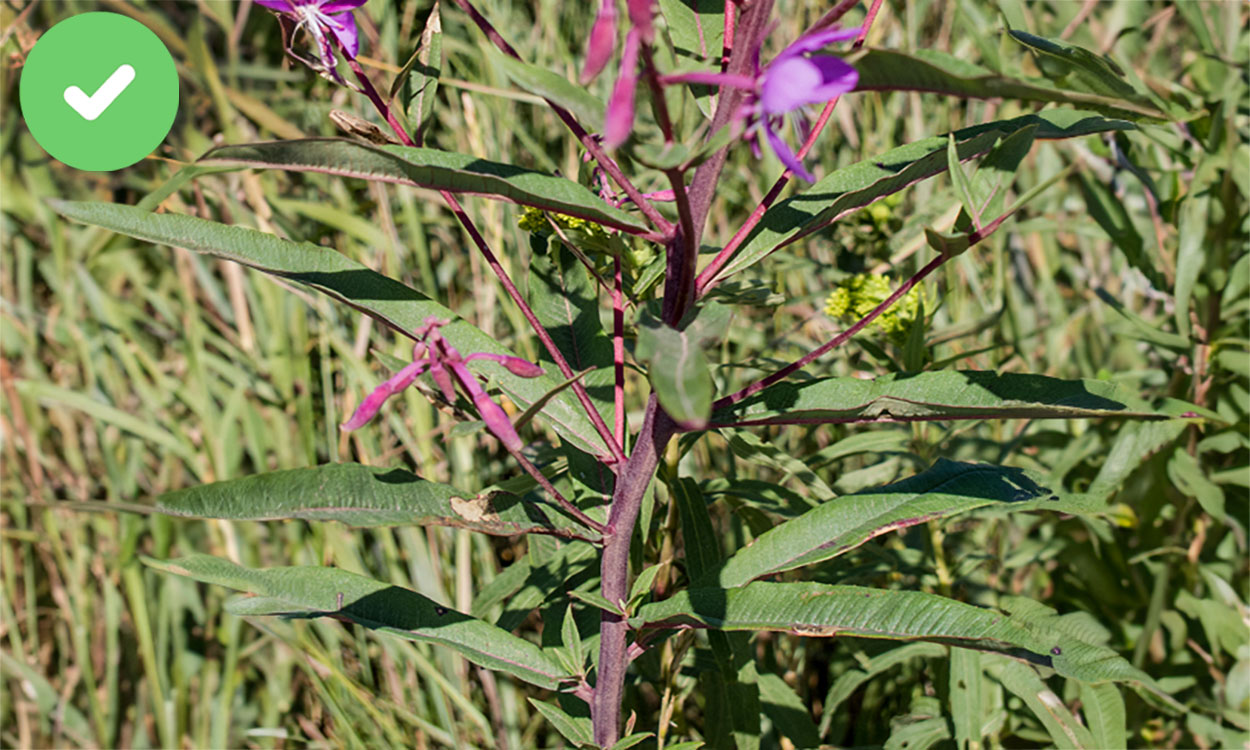
Purple Loosestrife
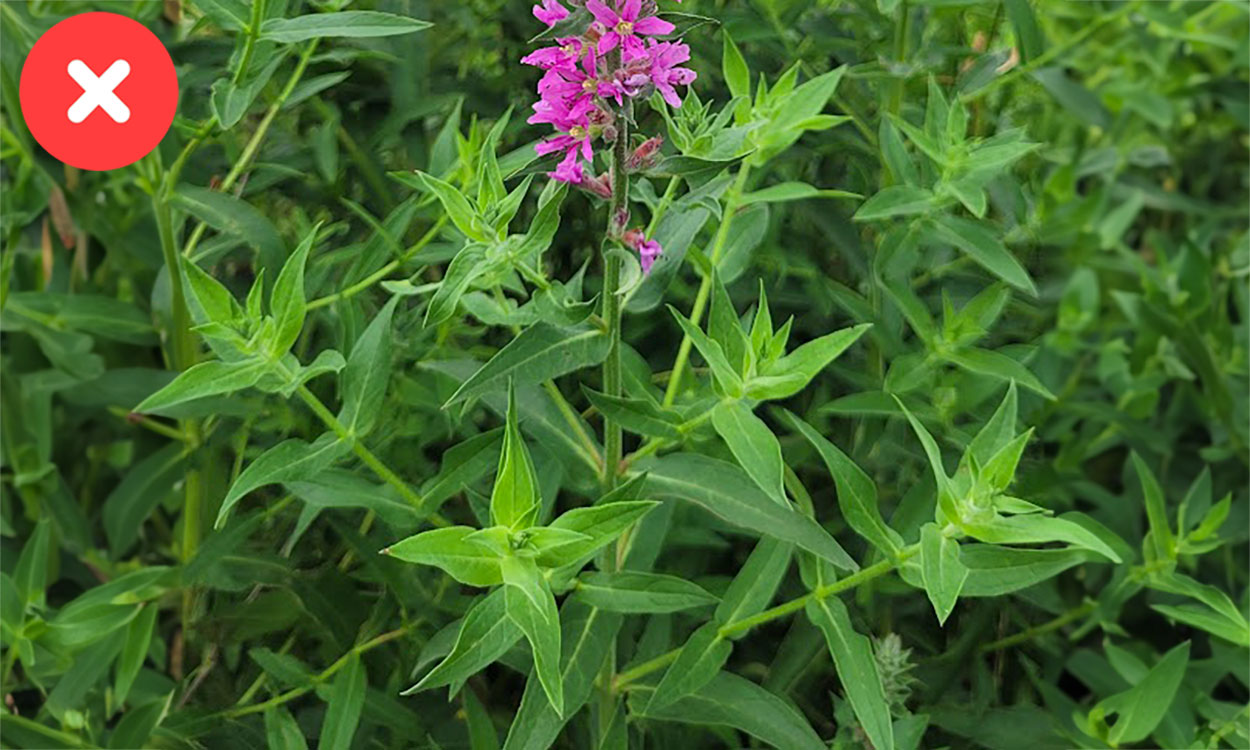
Habitat
Both fireweed and purple loosestrife can be found in a wide range of habitats that often overlap with one another, so distinguishing these two species by habitat type alone is not recommended. Fireweed is commonly found in meadows, roadside ditches, along streams, and forest edges (Figure 5). Although purple loosestrife can be found along roadside ditches and in home gardens, it most aggressively invades stream and wetland edges (Figure 6).
Fireweed
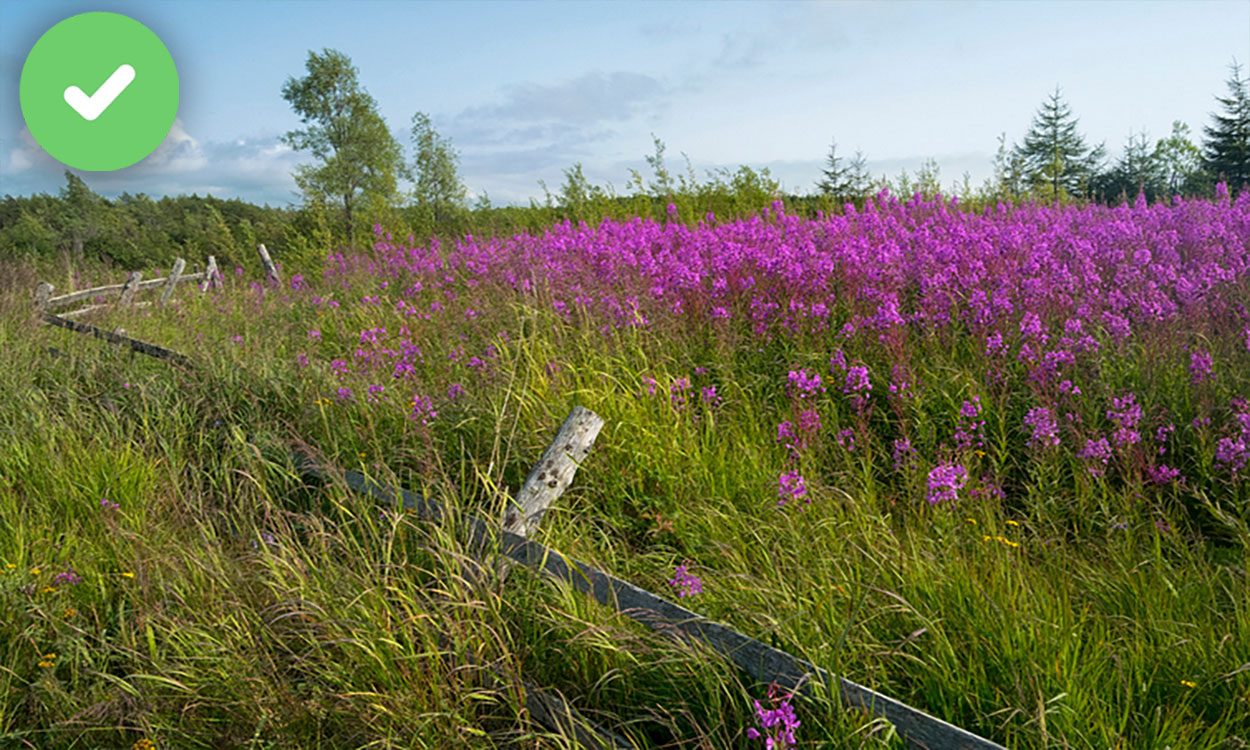
Purple Loosestrife
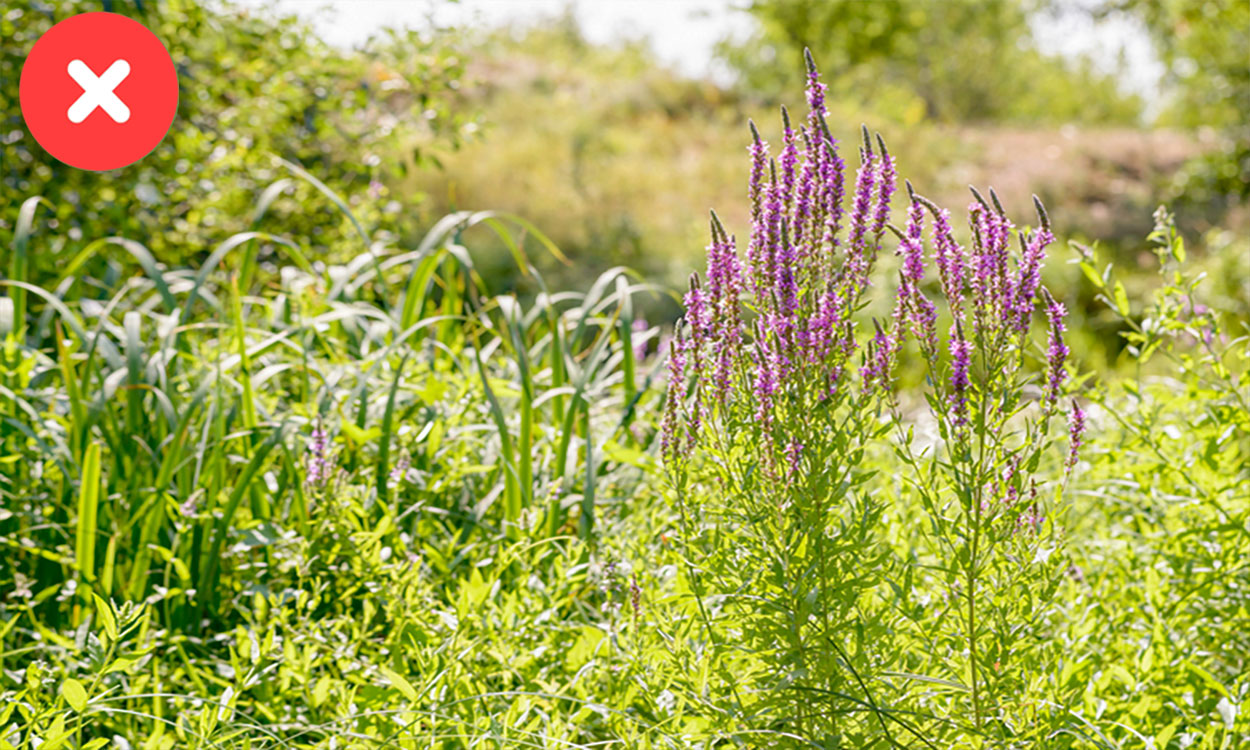
Ecological Function
Fireweed and purple loosestrife have contrasting impacts on their environment. Fireweed is a beneficial species for ecological restoration. When restoring areas after a disturbance, such as wildfires, logging, or pipeline development; fireweed quickly establishes to stabilize the soil and prevent erosion. In fact, fireweed’s common name arises from its ability to quickly colonize areas cleared by fire, illustrating how it is a pioneer species in disturbed habitats. It also is a source of nectar for pollinators, such as bees, butterflies, and hummingbirds; thus supporting local biodiversity.
In contrast, invasive purple loosestrife is known for aggressively spreading, especially in wetlands. It spreads prolifically, often outcompeting native vegetation, and forms dense stands that can significantly alter the function of wetlands; reduce biodiversity; and degrade habitats for fish, amphibians, and birds. Its negative impact has prompted extensive management and eradication efforts.
Managing Purple Loosestrife
Because of its aggressive invasiveness, it is illegal to sell or plant purple loosestrife in the state of South Dakota. Loosestrife often grows alongside native plants, so mechanical removal by pulling the whole plant, including the roots, out of the ground is often preferred to herbicide treatments. Once established in an area, it can be exceedingly difficult to get rid of purple loosestrife. The primary reason behind this is that purple loosestrife is a prolific seed producer. One plant can produce two million seeds, so even if you remove all purple loosestrife in an area, there are likely many viable seeds still in the soil. This means that you will often need to treat an area over a few years and be sure to pull all loosestrife before it goes to seed. Severe infestations may require the use of herbicides; as a reminder, always follow the instructions for use on the label for appropriate and safe applications. Some agencies have also approved the use of biological controls, using beetles that eat only plants in the loosestrife family. However, this is only recommended for infestations that are larger than one acre.
References and Resources
- Purple Loosestrife, University of Wisconsin Extension.
- Purple loosestrife (Lythrum salicaria), Minnesota Department of Natural Resources.
- Fireweed (Chamerion angustifolium), U.S. Forest Service.
About the Native Plant Initiative
Native plants are the foundation that supports insects, pollinators (including bees), birds and wildlife.
Learn More